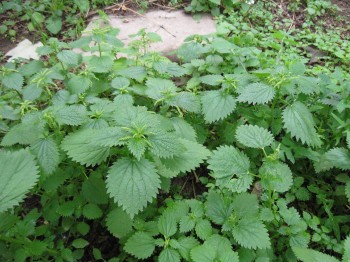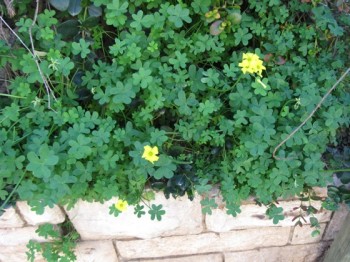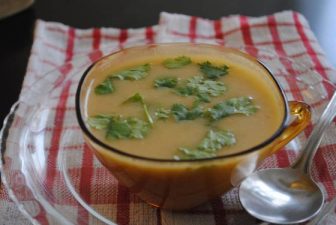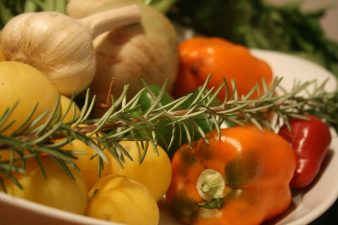 Miriam suggests ways to cook free wind-sown vegetables.
Miriam suggests ways to cook free wind-sown vegetables.
At this time of year, you may find free vegetables growing in your own backyard (like Karin did), or in your windowbox. Springing up from wind-sown seeds and roots that slept underground through last summer, the newly green landscape is actually full of green vegetables. The first thing is to identify what’s growing out there. Take a reliable local field guide with you – or a reliable local grandma who’s foraged and eaten wild greens since childhood – and pick the plants they say are safe. Chicory is coming up around now – read this post on how to cook it with onions. Then take your bounty to the kitchen and cook it up.
Mallows. The youngest, tenderest leaves of the mallows, make a fine addition to the salad bowl. The taste is mild and just sort of green – you’d never guess how rich in vitamin C mallows are. Stuff bigger leaves with rice and pine nuts just like grape leaves. Roll them up and cook them in a lemony, tomatoey, olive oily sauce. In early summer when mallows flower, eat the flowers in salad or dry them to add to winter teas.
Nettles (photo below). Yes, they sting. But they’re full of iron and other good minerals that protect your kidneys and adrenals. Nettles have a taste slightly like seaweed. They’re good rinsed, shaken dry, and dropped into soup 10 minutes before serving. Or try a cup of chopped nettles instead of spinach in a souffle.They’re particularly good paired with sharp cheese.
Hint: either wear gloves or use scissors to cut them in the field. Use the scissors or a pair of tongs to handle them. Nettles lose their sting when cooked or dried. And once their light-green seeds have matured and are brown, nettles are best left alone until next year.
Cape Sorrel. Just ask the neighborhood kids what “hamzutzim” are. They’ll know how best to eat the fresh, sour-tasting leaves and flowers – raw. But don’t make an entire salad out of them, because their oxalic acid, like rhubarb’s, is only OK up to a point. Just toss a small handful into the salad bowl, along with other greens, or line a sandwich with the leaves instead of lettuce.
More on wild edibles from Green Prophet:
Go Wild With Two Winter Salads
Edible Weeds in Your Middle Eastern Garden
Photos of nettles, and Cape sorrel by Miriam Kresh.






love this post! i’m a big fan of urban foraging and these are great examples
Thank you for this cheerful, informative post. But was confused about the bit about young, tender leaves of mallow as in ‘photo above’. the lady seems to be nibbling on dandelion or something rather than a mallow. Isn’t the leaf or mallow circular-lobed?
Thanks again for the post.